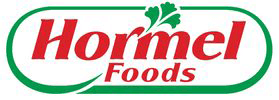Navigating New Compliance Challenges in 2025: What Minnesota Businesses Need to Know

Navigating New Compliance Challenges in 2025: What Minnesota Businesses Need to Know
Minnesota businesses face a wave of new laws and policies taking effect on January 1, 2025. These changes, resulting from recent legislative sessions, bring new compliance requirements, increased costs, and operational challenges across industries.
To help businesses prepare, the Minnesota Chamber of Commerce has provided a Cost and Compliance Guide, offering resources and insights to navigate these changes. Below is a summary of the key policies and their potential impacts on businesses:
1. Gas Tax Increase
Minnesota’s gas tax will increase by 3.3 cents per gallon, tied to inflation. Businesses reliant on transportation should anticipate higher costs.
2. Salary Transparency Requirement
Employers with 30 or more employees in Minnesota must now include salary ranges and a general description of benefits in job postings. This change promotes transparency but may require updates to recruitment processes.
3. PFAS Product Ban
The sale of certain products containing PFAS (per- and polyfluoroalkyl substances) will be banned by 2025, affecting supply chains for manufacturers and retailers. Businesses should review inventories and sourcing practices to ensure compliance.
4. Unemployment Insurance (UI) Tax Rate Increase
Base UI tax rates for employers will rise from 0.10% to 0.40%, with an additional 5% assessment for 2025. Employers should account for these increases in their budgeting.
5. Minimum Wage Increase
The statewide minimum wage will rise to $11.13 per hour, with small businesses no longer benefiting from a reduced rate. This change represents a significant adjustment for many employers.
6. Earned Sick and Safe Time (ESST) Mandate
Employers offering paid time off (PTO) must ensure it meets the requirements for ESST-qualifying purposes, including anti-retaliation measures and documentation policies.
7. Health Insurance Mandates
Eleven new mandates will take effect, contributing to premium increases of up to 15% for businesses and employees. Employers should review their health insurance plans and consider strategies to mitigate costs.
Looking Ahead: “Secure Choice” Retirement Program
While most policies take effect this year, the implementation of the Secure Choice retirement program has been delayed until January 1, 2026. This program will require employers without retirement plans to participate in a state-run option.
Why Staying Informed Matters
Laura Bordelon, Senior Vice President of Advocacy at the Minnesota Chamber of Commerce, emphasized the importance of preparation:
“The cumulative impact of these measures, from increased taxes to stricter regulations, poses significant challenges for Minnesota employers and employees.”
By staying informed and proactive, businesses can navigate these challenges more effectively. The Austin Area Chamber of Commerce is here to help you stay ahead of the curve. For more detailed information, access the Minnesota Chamber’s Cost and Compliance Guide or reach out to us directly.

